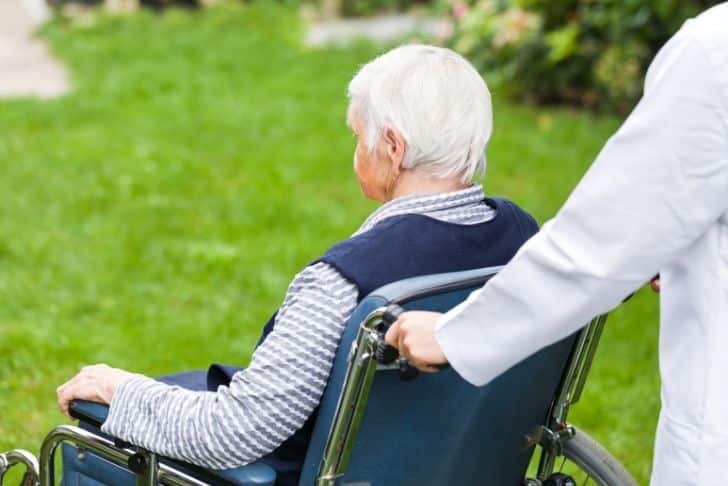Navigating life’s golden years comes with its own unique challenges, especially when it comes to maintaining your physical well-being. With data showing that over one in four people over the age of 65 experience falls annually, it’s clear that this is a prevalent issue that carries serious implications, including long-term disabilities and significant health problems triggered by broken bones. This comprehensive guide is packed with information detailing potential risk factors such as aging-related health conditions, loss of muscle mass, and the impact of certain medications, along with practical strategies to prevent falls. You’ll find advice on everything from how to keep active and maintain healthy bones to ways to fall-proof your home and choose proper footwear. Additionally, this guide provides crucial tips on what steps to take after a fall to minimize injury and prioritize safety. Maintaining a healthy lifestyle by understanding these risks and implementing prevention methods can help to ensure your later years are indeed your best years.
Understanding the Risk Factors for Falls in Older Adults
Navigating the world as you age can present unique challenges. Your body is changing and you may not react or move as swiftly as you once did. With over one in four people aged 65 or older experiencing falls each year, it is important to explore the risk factors that contribute to this issue.
Impact of age-related physiological changes
Physiological changes due to aging, such as a decline in eyesight, hearing, and reflexes, can increase your risk of falls. For instance, decreased vision can make it difficult to notice tripping hazards, while slower reflexes might mean you’re unable to react quickly enough to prevent a fall when you stumble.
Exacerbating roles of health conditions
Specific health conditions like diabetes, heart disease, and certain types of dementia can increase the risk of falls. These ailments can impair your balance, make you feel dizzy or lightheaded, or even cause sudden loss of consciousness, thus increasing your possibility of experiencing falls.
Effects of medications on balance and coordination
Certain medications can affect your balance and coordination—key factors in preventing falls. For example, drugs used to treat high blood pressure can cause dizziness and slow reflexes. If you’re on such medications, it’s vital to be extra careful when moving around to avoid falling.
Influence of environmental and lifestyle factors
It’s not just your health status that influences fall risk. Even environmental and lifestyle factors play a part. Poor lighting can obscure hazards, while clutter and obstacles in your living space can increase the risk of trips and falls. Likewise, the use of unsafe footwear or ventures in bad weather could also enhance the probability of falling.
The Role of Fear in Falls among the Elderly
Ironically, fear itself can be a precursor to falls among the elderly. The more you worry about falling, the less likely you are to engage in activities that keep you strong and agile.
Psychological effects of fear of falling
The fear of falling can be a crippling emotion. It can reduce your confidence and make you anxious every time you move around. This state of constant stress doesn’t just affect your mental health, it can also lead to physical tension, impairing your mobility and ultimately increasing your risk of falls.
Avoidance behaviors and their impact on fall risks
Fear can lead to avoidance behaviors—where you refrain from certain activities for fear of falling. Unfortunately, this can create a vicious cycle. Avoiding physical activities can lead to a reduction in muscle strength and flexibility, which are key to maintaining balance and preventing falls.
Addressing and managing fear of falling
While fear of falling can be intense, there are ways to manage it. Tackling this fear involves allowing yourself to be active while also taking suitable steps to safeguard against falls. Engaging in regular exercise to improve physical strength, making necessary home safety modifications, and wearing proper footwear are practical methods to reduce fear and enhance confidence.

The Impact of Sarcopenia on Falls in Older Adults
Sarcopenia, age-related loss of muscle mass, is another significant player when it comes to falls in older adults.
Understanding sarcopenia: An age-related muscle loss
As we age, we naturally lose some of our muscle mass. This process is known as sarcopenia. As sarcopenia progresses, tasks that were once simple can become difficult or even impossible, leading to fatigue and mobility problems.
How sarcopenia increases fall risks
Sarcopenia can greatly increase the risk of falls. The reduced muscle mass compromises your strength and endurance, making it harder for you to balance effectively. This can lead to difficulty in moving around and considerably enhance the probability of falls and serious injuries.
Managing sarcopenia to prevent falls
While sarcopenia is a natural part of aging, it doesn’t mean you’re powerless against it. Regular physical activity and strength training can help slow the progression of muscle loss, improve balance, and lessen the risk of falls. A balanced diet can also contribute to maintaining muscle health.
Preventative Measures for Falls in the Elderly
Prevention is always better than cure. There are multiple ways to lower your risk of falls and the injuries they cause.
Importance of physical activity and exercise
Regular physical activity is vital not only for overall health but also for fall prevention. Things like strength training can help maintain your muscle mass, while balance exercises can lessen the chances of uncontrolled falls.
Fall-proofing the home
Home might seem the safest place but it’s actually where most falls occur. Fall-proofing your home involves removing tripping hazards like loose rugs, improving lighting, and installing handrails or grab bars in places like the bathroom.
Regular health checks: eyes and ears
Your vision and hearing are crucial for maintaining balance. By going for regular check-ups, you can make sure your glasses or hearing aids are working properly and thus reduce your chances of falls.
Managing medication side effects
As mentioned earlier, certain medications can adversely affect your balance and coordination. Discussing these side effects with your healthcare provider may help find alternative treatments or develop strategies to manage the effects.
The role of good nutrition and maintaining a healthy weight
Eating well can not only help maintain your muscle mass and bone health but it also keeps your weight in check. Being underweight can increase the risk of bone loss and fractures, while obesity can stress your joints, impair balance, and contribute to falls.

The Role of Footwear in Preventing Falls
Just as every step matters, so does what you put on your feet. Footwear can play a significant role in preventing falls.
Choosing the right footwear for safety
Supportive, well-fitting shoes with nonslip soles can significantly reduce fall risk. High heels, flip-flops, or wearing socks only increase the risk of slipping and falling.
Avoiding footwear that increases fall risk
Bad footwear choices can contribute to falls. Shoes with worn soles, for example, can increase your risk as they provide no grip. Therefore, regularly checking and replacing footwear is an essential preventive measure.
The role of assistive walking devices
Proper footwear can often provide enough support, but for some, additional assistance may be necessary. Assistive walking devices like canes or walkers can provide significant stability and reduce the risk of falls, especially in those with chronic diseases or balance problems.
Post-fall Steps to Take for Older Adults
If a fall does happen, remembering specific steps can reduce panic and mitigate harm.
Staying calm post-fall
After a fall, the most important step is to stay calm. Try to take deep breaths and avoid moving for a few minutes as you get your bearings and assess the situation.
Assessing injuries properly
Before trying to get up, assess yourself for injuries. If there’s severe pain or inability to move, it’s best to stay put and call for help.
Proper methods to get up post-fall
If you’re not severely injured, try to get up slowly. Roll onto your side, push up into a seated position then to hands and knees, and crawl to sturdy furniture to help stabilize yourself as you rise.
When and how to seek help
After a fall, especially one that results in injury, it is important to seek medical attention. Contact your healthcare provider to discuss the event and any symptoms you may have.

Bone Health and Its Relation to Falls
Your bones are your body’s framework. Keeping them strong is vital to prevent critical damages from falls.
Role of adequate calcium and Vitamin D
Calcium and Vitamin D are essential for maintaining bone health. Consuming a diet rich in these nutrients can help reduce your risk of bone loss and fractures.
Influence of physical activity on bone health
Exercise is not only beneficial for your muscles but also for your bones. Weight-bearing exercises can help strengthen your bones and reduce the risk of fractures.
Effects of smoking and alcohol on bone health
Smoking and excessive alcohol consumption can weaken your bones, making you more prone to fractures. Therefore, avoiding smoking and limiting alcohol consumption can be favorable for bone health.
Dealing with osteoporosis and fall risks
Osteoporosis, a condition causing weak and brittle bones, can significantly increase your risk of fractures. Consulting your doctor about osteoporosis and taking the prescribed medications can help manage this condition and reduce the risk of serious injuries from falls.
The Importance of Regular Doctor Consultations in Fall Prevention
Preventing falls isn’t something that you have to tackle alone. Your healthcare provider is a valuable resource in this regard.
Why reporting all falls matter
It’s important to report all falls to your healthcare provider—not just the ones that result in injury. They can help you identify why you fell and develop a strategy to prevent future falls.
How frequent consultations can aid in fall prevention
Regular check-ups are key to maintaining your health and supportive in fall prevention. Your doctor can review your medications for side effects, assess your vision and hearing, and monitor your overall health—all of which contribute to fall prevention.
The role of healthcare professionals in fall prevention
Healthcare professionals play a crucial role in fall prevention. They can provide practical advice on exercise routines, dietary changes, medication adjustments, and safety modifications at home to reduce your risk of falls.
The Role of Weight Management in Preventing Falls
Maintaining a healthy weight is another critical aspect of fall prevention.
Risks associated with being underweight
Being underweight can increase your chance of bone loss and fractures, escalating the events leading to falls.
Link between obesity and fall risks
On the other hand, being overweight can stress your joints and increase your risk of developing health conditions such as diabetes, both of which can lead to an increased risk of falls.
How maintaining a healthy weight can prevent falls
Maintaining a healthy weight, therefore, is essential in preventing falls. Regular exercise and a balanced diet can help you reach and maintain a healthy weight, ultimately reducing your likelihood of falling.
The Impact of Falls on Hospitalization among Older Adults
Falls aren’t just harmful—they’re also costly. In fact, falls are a common cause of hospitalization among older adults.
Frequency of falls as major cause for ER visits
Falls often lead to emergency room visits, with injuries ranging from minor bruises to serious fractures or head injuries.
Dealing with complications post-hospitalization
Following a fall that necessitates hospitalization, there can be complications such as infections, diminished mobility, and an overall reduction in the quality of life. Proper post-hospitalization care is essential to overcome these challenges.
The role of preventative measures in reducing hospital stays
To avoid the costs and risks of hospitalization, it’s wise to invest in prevention measures. Following precautions discussed above, like staying physically active, managing medications, and keeping homes safe, can dramatically reduce the risk of hospital stays due to falls.
